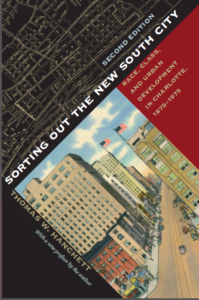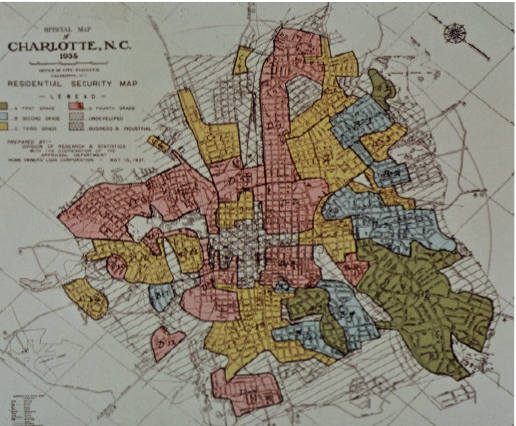
Sorting Out the New South City: Race, Class, and Urban Development in Charlotte, Second Edition
by Thomas W. Hanchett

Explore how Charlotte grew big – and how it grew segregated, both by race and class.
A new preface to the Second Edition brings the story up to today, tackling issues of immigration, affordable housing and more.
Hanchett argues that racial and economic segregation are not age-old givens, but products of a decades-long process. Well after the Civil War, Charlotte’s whites and blacks, workers and business owners, all lived intermingled in a “salt-and-pepper” pattern. The rise of manufacturing enterprises in the 1880s and 1890s brought social and political upheaval, however, and the city began to sort out into a “checker-board” of distinct neighborhoods segregated by both race and class. When urban renewal and other federal funds became available in the mid-twentieth century, local leaders used the money to complete the sorting out process, creating a “sector” pattern in which wealthy whites increasingly lived on one side of town and blacks on the other.

